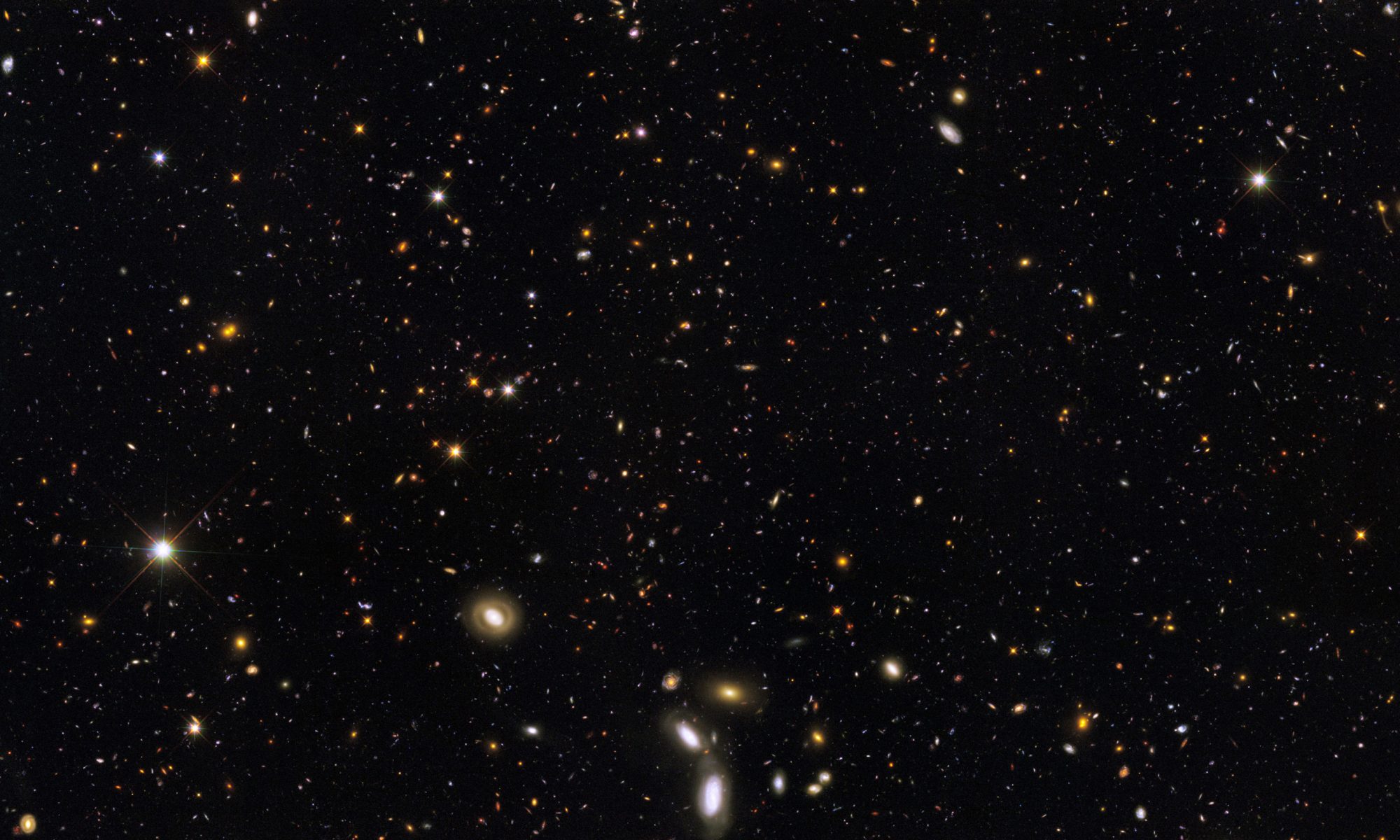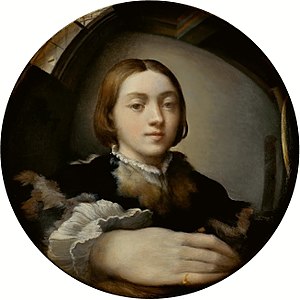In the case of longer poems, movement control through image becomes a much more involved task. John Ashbery assumes this task in his long poem, “Self-Portrait in a Convex Mirror,” which reflects on Parmigianino’s painting of the same name. While the impetus for Ashbery’s poem is ekphrastic, and he returns often to this originating source, he eschews the traditional impulse to control the movement through narrative or language. Most longer poems rely on either narrative (as in epic poems), or rhythm/rhyme constructions (as in ballads) to control their movement. Ashbery, in contrast, uses image to control the movement of his poem. Because this method is non-linear and a-logical, teasing out the movement of the poem can become difficult, as has already been shown.
In this case, it becomes even more complicated because “Self-Portrait” is a considerably longer poem than those previously evaluated, and this length requires a continual inquiry against (and expansion of) the images used to control the movement. Without narrative or language driving the poem forward, the poet is constantly in danger of losing the reader to complex inter-networks of image complication. On the other hand, the breadth of these networks also serves to expand the dialectic field of intellectual-emotional complex. Again, this dialectic field becomes so complex and interlinked that total comprehension of the poem in the manner of the shorter poems above is difficult. It may even be that comprehension only appears in the form of intuitive understanding. This is not to say that some insight may not be gained by inspecting the poem and attempting to coerce loose some of the various threads.
A full reading of the image logic of “Self-Portrait” lies well outside the scope of this essay. However, several strands of image networks present themselves for interrogation within the first few sections of Ashbery’s poem. The first image presented is that of the painting, and since “Self-Portrait” is an ekphrastic poem, this is entirely appropriate. A few qualities of the painting need to be noted before proceeding, because much of what follows relies on these qualities. The first thing to remember about the painting is that it is not a flat, two-dimensional surface. Instead, Parmigianino used a hemisphere the same size and shape as the mirror as his canvas. Many of the recurring images in the poem rely on this image of a hemisphere. The second quality to keep in mind is that of the representation of the painting, photographs of which are readily available online. Features of the subject and his surroundings are distorted in the complexity of the convex mirror, and these distortions carry on throughout the poem. Finally, the painter himself becomes a networked and recurring image throughout the poem, through both himself and metonymy of himself.
The first section of Ashbery’s poem focuses explicitly on the painting, the painter, and the history of the painting. Because this section sets up the facts of the history, painter and painting, it relies more on narrative movement than image movement, but still incorporates elements. The first few lines introduce the different perception layers Ashbery investigates over the course of the poem: the artist, the viewer, the representation, and the surface. Ashbery also includes, from one of Parmigianino’s contemporaries, reflections on the artist’s methods and techniques. The poet references the mirror and the hemisphere of the mirror several times in this first section, finally coming to the conflation between the abstract “speculation” and the Latin “speculum,” or mirror. “Speculum” contains the added benefit of also being a medical tool which allows the doctor access to the inside of a body. Only a few lines later, life becomes “englobed,” returning to the spherical image. The artist’s hand is “big enough / to wreck the sphere, /…/…to weave delicate meshes,” focusing attention on the image of the perverse hand exploring the inner boundaries of the sphere. And soon after, the poet equates the eyes to spheres, and perception to surface: “the surface is what’s there.” Ashbery then offers what may be his thesis for this poem:
… The whole is stable within
Instability, a globe like ours, resting
On a pedestal of vacuum, a ping-pong ball
Secure on its jet of water.
The instability of the perception(s) of surface, the Earth indicated by “globe” and “pedestal of vacuum,” the Earth juxtaposed to a ping-pong ball: inconsequential, delicate, and anachronistic.
Ashbery continues the anachronism with the first three words of the second section: “the balloon pops.” The anachronistic referent serves at least two purposes. One is to draw a parallel between the balloon and the ping-pong ball, which is equated with Earth at the end of the first section. A second is to finalize the movement in time from Parmigianino’s era to the reader’s own in which the narrator speaks. But the narrator’s speech is conflated and mixed between the narrator and the painter. Just as the boundaries between the different surfaces are fluid, so too are the speech of the narrator, the speech of the painter, and the speech to the painter. The poem then returns again to the mirror, and the surface of the mirror which is equated to the surface on which the stars live (a common belief at the time Parmigianino was painting) and circle the “polestar of your eyes.” Ashbery again returns to the concrete here, equating that rotation about the polestar to a carousel, but suddenly the carousel is composed of the detritus of the busy life: “desk, papers, books, / Photographs of friends” all whirl around the daydreamer as they might around a person who does not examine closely. The rails of this surreal carousel are paralleled again later with the “certain spars /…/ Eyebeams, muslin, coral.” The network continues to grow through the rest of the poem, associations building through image and propelling the poem along.


Well written article.I really like that painting.